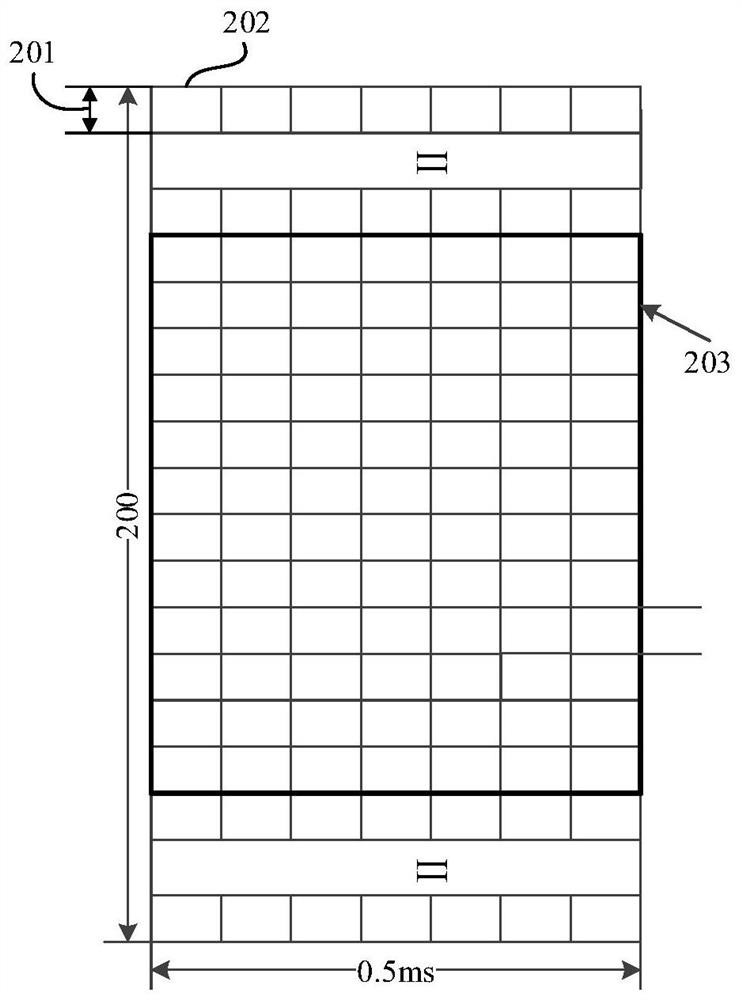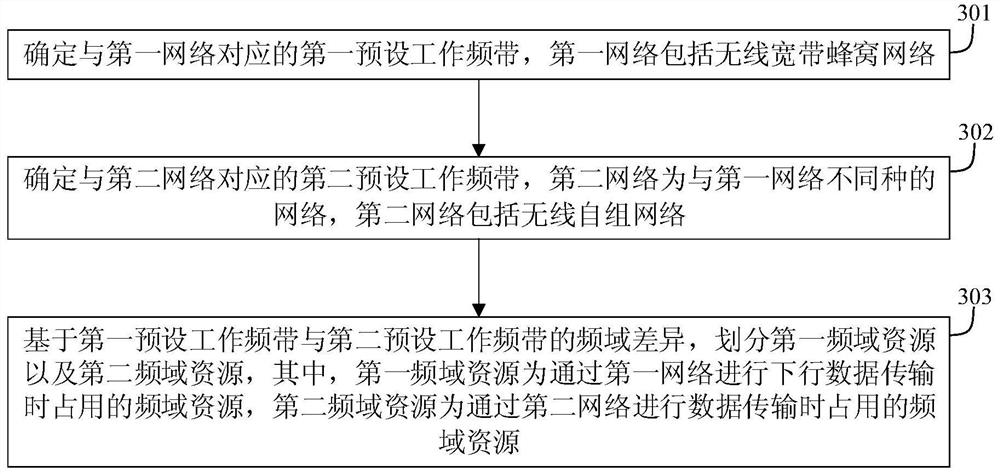Frequency domain resource division method and device
A frequency-domain resource and time-frequency resource technology, applied in the field of communication, can solve problems such as data transmission performance degradation, lack of coordination mechanism, and data transmission mutual interference, so as to improve business experience, reduce co-channel interference, and improve transmission performance.
- Summary
- Abstract
- Description
- Claims
- Application Information
AI Technical Summary
Problems solved by technology
Method used
Image
Examples
Embodiment Construction
[0032] In order to make the purpose, technical solution and advantages of the present application clearer, the implementation manners of the present application will be further described in detail below in conjunction with the accompanying drawings.
[0033] First, a brief introduction to the nouns involved in the embodiments of this application:
[0034] A heterogeneous network is a network composed of two or more different networks. Two or more different networks use different wireless technologies. The networks are independent of each other and do not perform information exchange or resource coordination. In one example, heterogeneous networks include wireless cellular networks such as LTE and wireless ad hoc networks. Wireless ad hoc network is a temporary autonomous network including multiple communication nodes. The nodes in the network are all equal, and each communication node is equipped with a wireless transceiver, which has the functions of sending, forwarding and ...
PUM
 Login to View More
Login to View More Abstract
Description
Claims
Application Information
 Login to View More
Login to View More - R&D
- Intellectual Property
- Life Sciences
- Materials
- Tech Scout
- Unparalleled Data Quality
- Higher Quality Content
- 60% Fewer Hallucinations
Browse by: Latest US Patents, China's latest patents, Technical Efficacy Thesaurus, Application Domain, Technology Topic, Popular Technical Reports.
© 2025 PatSnap. All rights reserved.Legal|Privacy policy|Modern Slavery Act Transparency Statement|Sitemap|About US| Contact US: help@patsnap.com



